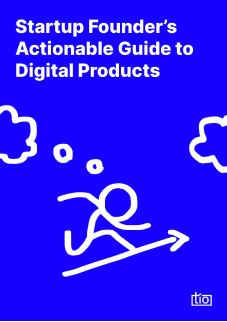How Do We Implement Lean Approach to Digital Products at tio?

Generating the maximum value.
While wasting minimal resources.
To always grow.
These are the 3 key steps of the lean approach which we try to use for both our own digital products and our digital partner’s products at tio. You will learn what is lean product development and how tio works by reading this post.
As surprising as it sounds, %95 the new products fail around the world. Most product failures originate from the lack of testing, measuring and learning before product launch. In other words, building products without understanding your customers’ needs and offering them solutions to solve their problems.
The lean product approach was born as a solution to these problems. By implementing a lean approach to tio’s and our digital partner’s development processes, we are able to successfully deliver digital products.
Explaining how we implement a lean product development approach to products we build in tio, is the key goal of this post. We believe a lean approach is how we create maximum value each time, and we will try to explain how. We will briefly explain what is a lean product approach, what is an MVP, what is value, and what is a waste. You can read an expanded, more detailed article about lean product development here.
What Is Lean Product Approach?
A lean product approach is a way of thinking about going to market faster with a smaller but scalable product or service which delivers as much as more value possible to the customers.
It was originally born in the 90s from the idea of the Toyota Production System which is a production methodology that prioritizes quality, just-in-time production and generates quality products by using minimum sources.
Lean product development is a process that helps businesses to create better products faster. The ultimate goal is to produce and deliver products that meet the needs of the customers and are successful in the market. Lean product development has been widely adopted by digital product companies around the world.
Lean product development is an approach to developing and delivering new products, to shorten cycles by identifying and prioritizing the value for customers.
According to Tom Poppendieck and Mary Poppendieck, which are writers of Lean Software Development: An Agile Toolkit, lean software development has 7 principles to follow:
- Eliminate waste.
- Amplify learning.
- Decide as late as possible.
- Deliver as fast as possible.
- Empower the team.
- Building integrity in.
- See the whole.
What is MVP?
The term MVP stands for Minimum Viable Product. The main purpose of an MVP is that it allows you to test your hypothesis about customers without going through the whole development process until the product is perfect. This way, you are able to gather info from your prototype and see whether or not customers will actually purchase your product.
At tio we, as a digital product studio, focus on building products that can deliver value as soon as possible. So, we build a Minimum Viable Product in order to test our assumptions -maybe the test will be as simple as a landing page and an A-B test via Facebook- about what users need. MVP allows us to validate if they will pay for the product and if there is a market.
What is Value?
In the context of lean digital product development, value means what extra benefit a product delivers to the end-user. The inherent worth of a product is appraised by the consumer and reflected in its selling price and market demand, according to the Lean Enterprise Institute.
At tio, we prioritize generating maximum value with a user-centric holistic approach. By focusing on creating and delivering maximum value throughout the development process, we are able to build successful products for our digital partners.
What is Waste?
Eliminating waste is the key to a lean-approach. Waste can simply be defined as any effort which does not add value to the end product. In lean product development, fundamental wastes are overproduction, unnecessary transportation, waiting, processing, inventor and defective product.
In the context of software and digital product development; wastes can be counted as partially done work, extra processes, extra features, task switching, waiting, motion and defects. To eliminate these wastes, we are starting with workshops with our digital partners to make sure we have a common understanding of what to design and build. We are running processes with meetings and regularly demanding feedback to make sure there is no waste.
📞 Book a free call to discover how we can support you digitally.
tio
4/19/2022
